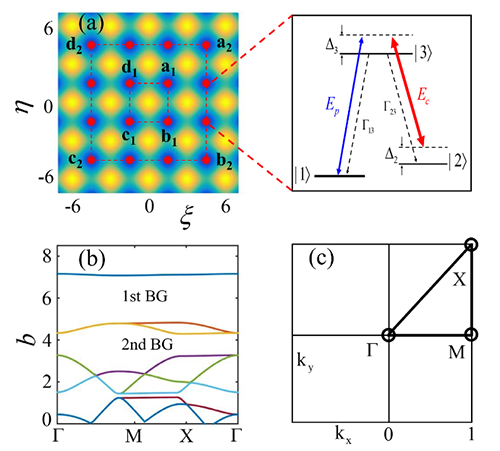| Sep 01, 2021 |
Gap solitons break one-dimensional coherent atomic systems
(Nanowerk News) As the core of the light field modulation technologies, optical lattice has highly tunability and is usually used to manipulate the nonlinear matter waves of Bose-Einstein condensate (BEC).
|
|
At present, the mainstream researches focus on coherent atomic systems like BECs which have been confirmed to be able to stably generate optical solitons under electromagnetically induced transparency (EIT) mode. However, related studies are limited to the periodic physical system in one dimension.
|
|
A research group led by Prof. Dr. ZENG Jianhua from the Xi'an Institute of Optics and Precision Mechanics (XIOPM) of the Chinese Academy of Sciences (CAS) has extended it to two-dimensional (2D). Results were published in Communications in Nonlinear Science and Numerical Simulation ("Two-dimensional optical gap solitons and vortices in a coherent atomic ensemble loaded on optical lattices").
|
 |
| Optical lattice, trapping scheme and band gap structure. (Image: XIOPM)
|
|
With the nonlinear Schrödinger equation derived from the Maxwell-Bloch equations, the researchers have created a coherent atomic gas trapped by 2D optical lattices. In that gas, the EIT operates and theoretically can generate solitions in a coherent system.
|
|
They then did simulations and derived vital characteristics of 2D localized gap modes in forbidden band gaps of the underlying linear Bloch wave spectrum. Using a linear stability analysis, the researchers found that the stability areas of the 2D localized gap modes always showed up in the middle of forbidden band gaps of the underlying linear band gap structure of the setting, whereas instable localized gap modes could be generated near the edges of the first and second finite band gaps.
|
|
In the 2D localized gap mode shallow lattice, the gap vortex generated within could not remain stable, but it could become stable by modulation of the lattice.
|
|
Considering the fast development of the optical lattices technique and EIT-related technique, the researchers believed that the mixture of these two would soon come true. And at that time, localized gap modes that predicted in this work could be observed in the laboratory.
|

